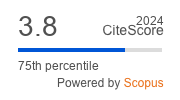Article | Open Access
Mobility as a Service: A Critical Review of Definitions, Assessments of Schemes, and Key Challenges
| Views: | 36493 | | | Downloads: | 22822 |
Abstract: Mobility as a Service (MaaS) is a recent innovative transport concept, anticipated to induce significant changes in the current transport practices. However, there is ambiguity surrounding the concept; it is uncertain what are the core characteristics of MaaS and in which way they can be addressed. Further, there is a lack of an assessment framework to classify their unique characteristics in a systematic manner, even though several MaaS schemes have been implemented around the world. In this study, we define this set of attributes through a literature review, which is then used to describe selected MaaS schemes and existing applications. We also examine the potential implications of the identified core characteristics of the service on the following three areas of transport practices: travel demand modelling, a supply-side analysis, and designing business model. Finally, we propose the necessary enhancements needed to deliver such an innovative service like MaaS, by establishing the state of art in those fields.
Keywords: business model; innovative mobility services; integrated mobility; modelling
Published:
© Peraphan Jittrapirom, Valeria Caiati, Anna-Maria Feneri, Shima Ebrahimigharehbaghi, María J. Alonso González, Jishnu Narayan. This is an open access article distributed under the terms of the Creative Commons Attribution 4.0 license (http://creativecommons.org/licenses/by/4.0), which permits any use, distribution, and reproduction of the work without further permission provided the original author(s) and source are credited.


